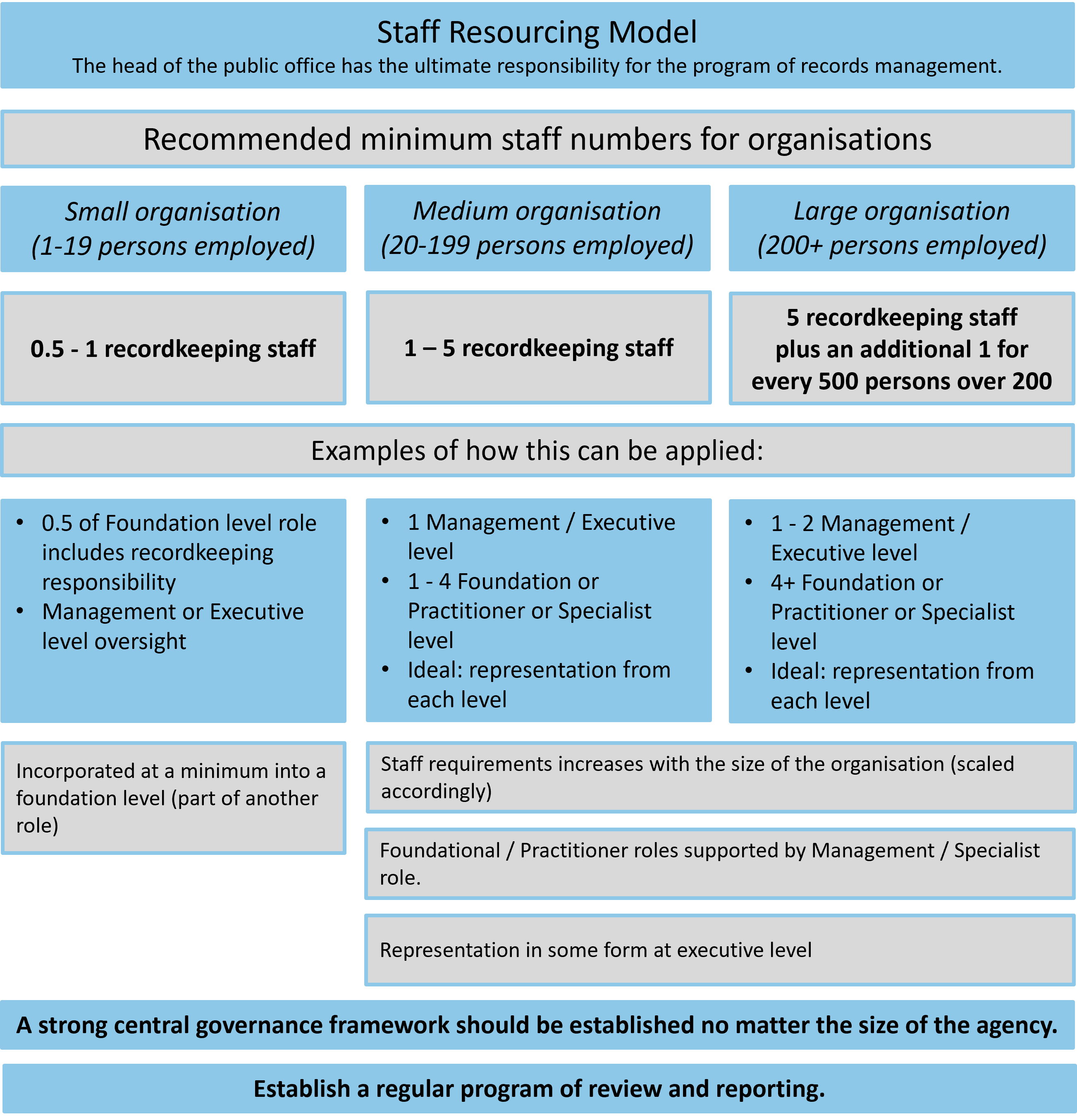About this guidance
PROV's Staff Resourcing Model for records and information management requirements sets out the recommended number of dedicated records management staff for public offices of different sizes. The aim of this model is to help public sector organisations consider the key variables which contribute to their staffing needs to achieve organisational goals. These variables include the size and complexity of the organisation and its processes and systems.
Why is this needed?
Departments and public entities need appropriately resourced records and information management teams to help ensure:
- compliance with legislation
- accurate and reliable information about their decisions, actions and agreements
- time is saved by reusing information
- knowledge is not lost when people leave the workplace
- accountability and trust in government as decision-making can be justified and demonstrated
- prevention, detection and identification of corruption.
The consequences of poor recordkeeping can be far reaching and significant. Inaccurate and unreliable records mean that important information cannot be found, accountability is questioned and in the worst instances, safety is compromised, trauma is relived, and corruption can flourish.
Who is this guidance for?
This guidance is for:
- agency heads
- executives and managers who have oversight of the records management program
- hiring managers
- records and information managers.
Staff resourcing model
This model is based on a range of assumptions, definitions and considerations. Please consider your organisation's circumstances to ensure you have sufficient current and future staff to achieve your goals.
- All recommendations are a minimum guide only to ensure inclusion of recordkeeping staff in employment strategies for VPS agencies
- These recommendations are not a benchmark, organisations must assess their own needs against business goals, funding and required support of the organisation for recordkeeping compliance.

